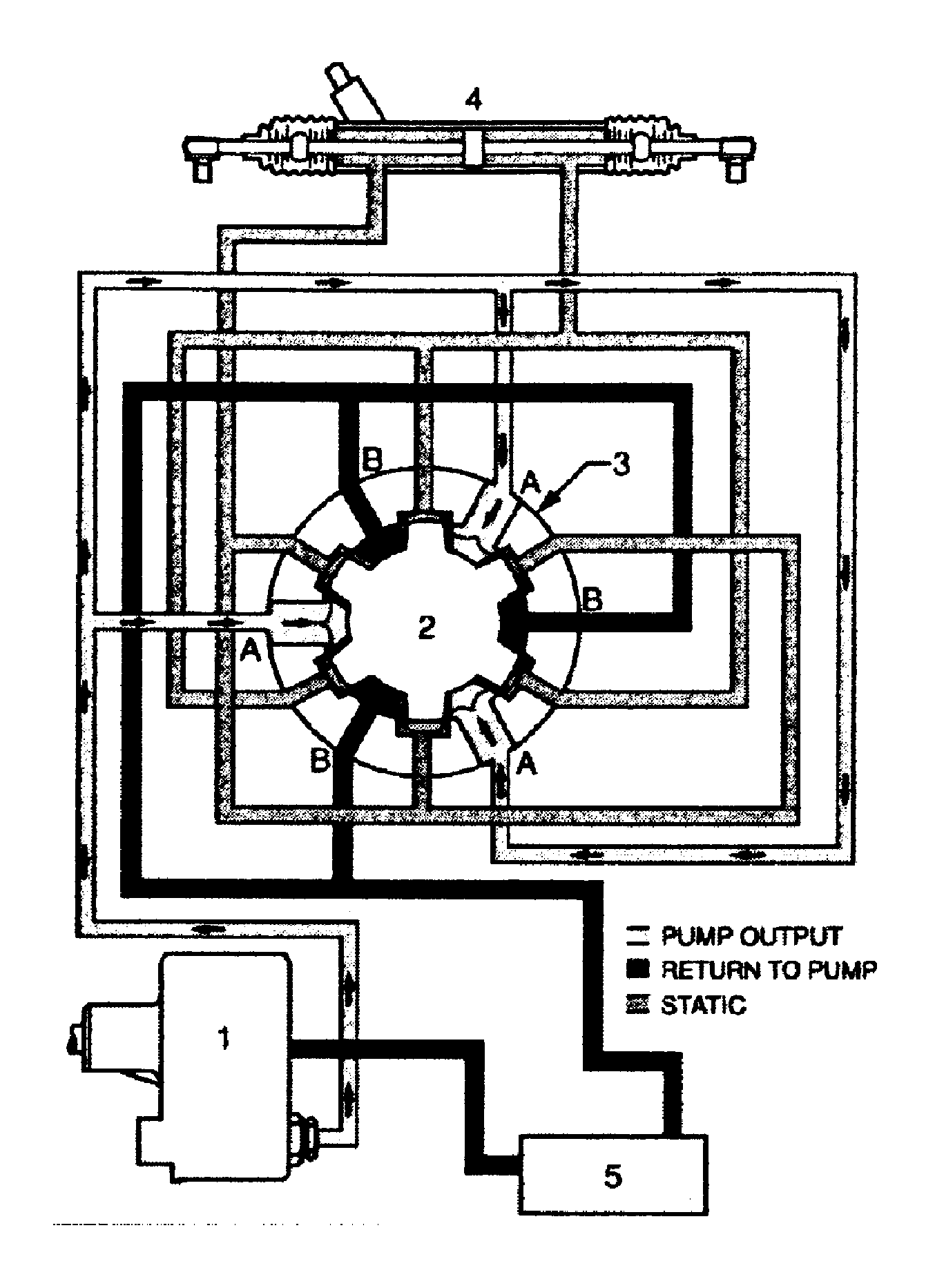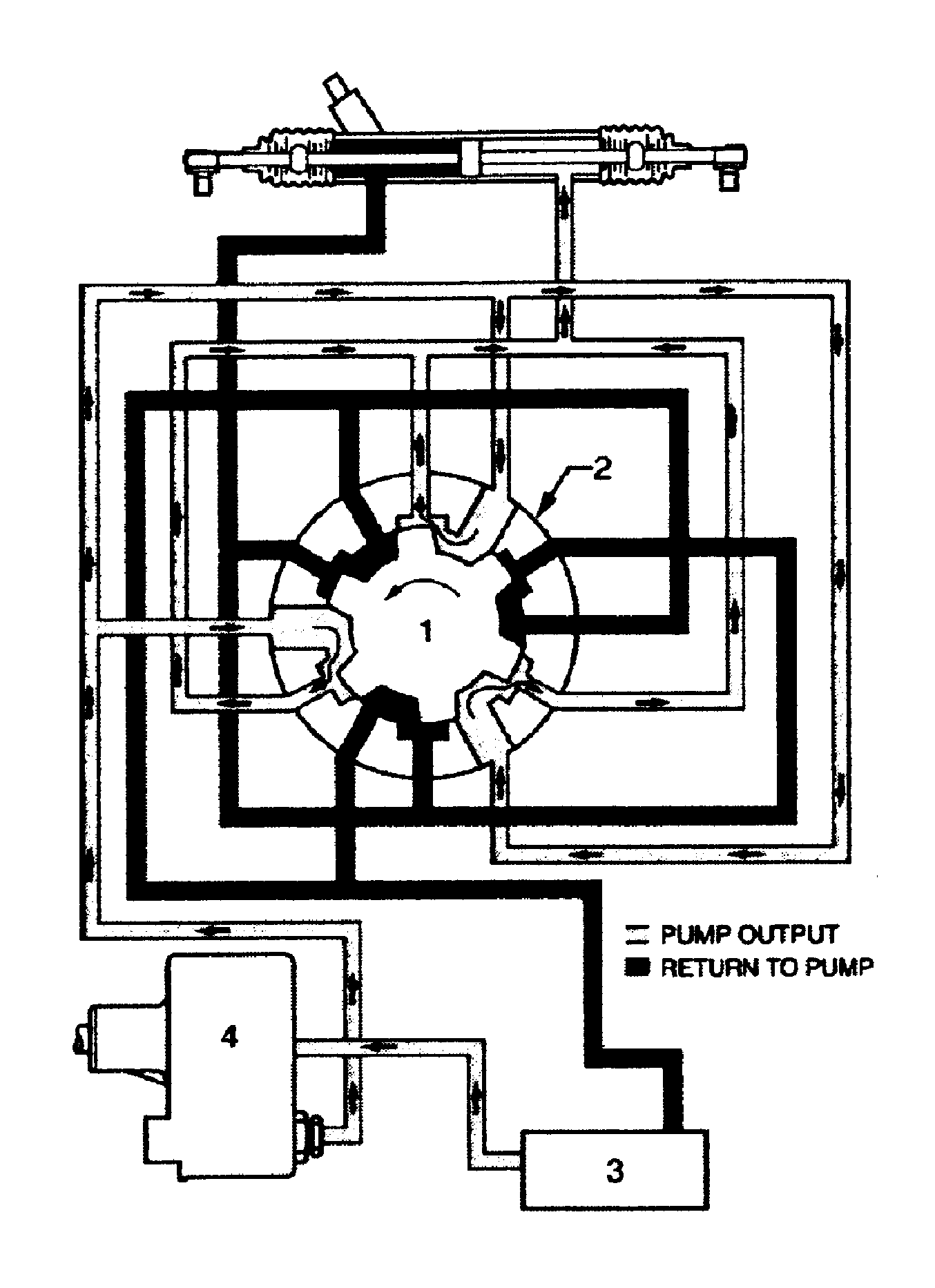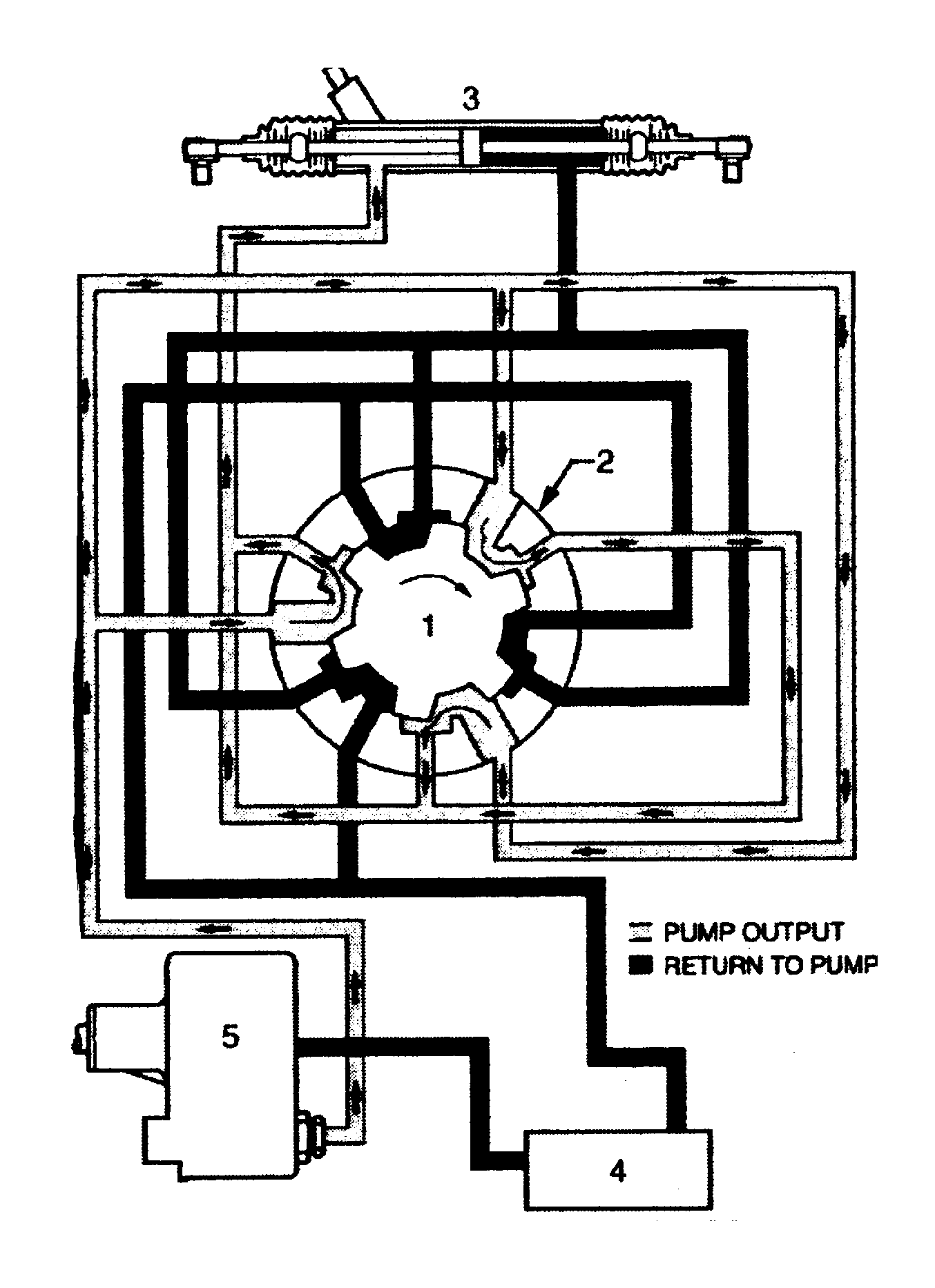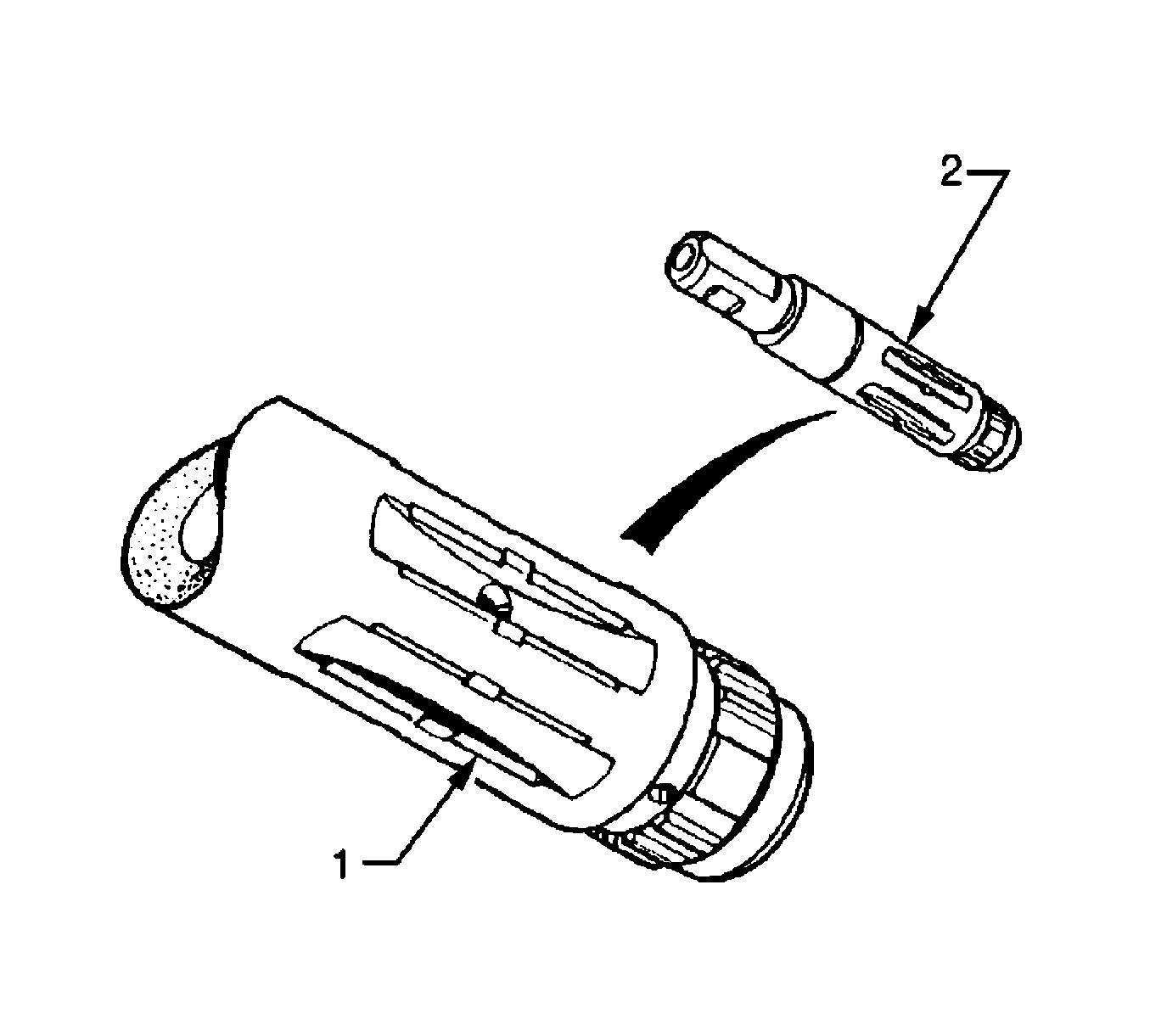Power Steering System Description
The power steering fluid reservoir holds the power steering fluid. It is mounted to a bracket on the engine remotely located from the power steering pump. The power steering fluid reservoir outlet hose allows low pressure fluid to flow from the power steering fluid reservoir to the power steering pump. The power steering pump is a constant displacement vane-type pump that provides hydraulic pressure and flow for the power steering gear. The power steering pump is belt-driven. The power steering gear inlet pipe/hose connects the power steering pump to the power steering gear allowing pressurised power steering fluid to flow from the power steering pump to the power steering gear. The power steering gear is a rack and pinion type assembly. The power steering gear converts steering wheel rotation to lateral movement. The power steering gear outlet pipe/hose allows fluid to flow from the power steering gear to the power steering fluid cooler. The power steering fluid cooler transfers the heat generated by power steering pump and power steering gear from the fluid to the atmosphere. The power steering fluid reservoir inlet hose allows fluid to flow from the power steering fluid cooler back to the power steering fluid reservoir.
Power Steering Pump Description
Hydraulic pressure for the power steering system is provided by a Kayaba vane type constant flow pump.
Fluid from the power steering fluid reservoir outlet pipe/hose flows through a passage in the power steering pump housing to the rear end plate which will then supply the vanes with under-vane pressure and to fill the cavity between the rotor and the pump ring as well as filling the high pressure chamber.
The power steering pump drive shaft is fitted with a pulley, which is driven by the serpentine belt from the engine crankshaft. The power steering pump drive shaft turns the rotor and vane assembly. The vane tips follow the inner cam surface of the power steering pump ring, moving outward and inward twice during each revolution. This results in a complete pumping cycle every 180% of rotation. Power steering fluid is moved in the spaces between the vanes. As the vane tips move inwards, the pressure of the power steering fluid is raised and the power steering fluid is discharged from the power steering pump ring through the thrust plate to the cavity in the front of the power steering pump housing. A portion of this pressurised power steering fluid is circulated through the central port system in the rear plate forcing the vanes against the cam surface of the power steering pump ring.
Power Steering Gear Description
The power steering gear is a rack and pinion type system, the rack and the pinion are the two components that convert steering wheel rotation to lateral movement. The steering shaft is attached to the pinion in the steering gear. The pinion rotates with the steering wheel. Gear teeth on the pinion mesh with gear teeth on the rack. The rotating pinion moves the rack from side to side. The steering gear contains a valve assembly that regulates the incoming fluid to the right and left chambers in order to assist in right and left turns. Turning the steering wheel partially rotates the valve assembly, which applies greater fluid pressure and flow to one side of the rack piston, and lower pressure and flow to the other side of the rack piston. The pressure assists the lateral movement of the rack. The lateral action of the rack pushes and pulls the tie rods in order to change the direction of the vehicle's front wheels.
Power Steering Fluid Flow
Neutral Position -- Straight Ahead

In the straight ahead position, power steering fluid flow from the pump (1) is directed into the cavity (A) of the inner valve assembly (2) and out through a number of drilled holes (B) in the outer sleeve (3). In this steering position, the inner valve allows power steering fluid to pass equally to both sides of the rack (4) piston (shown as static because no power steering fluid actually flows to and from the steering gear). The bypassed power steering fluid returns to the power steering fluid reservoir (5) through holes drilled in the longitudinal grooves of the inner valve. With an equal pressure applied to both sides of the rack piston, no power assistance is provided.
Turning Left

When turning to the left, relative motion between the inner rotating valve (1) and the outer sleeve (2) occurs, this blocks the fluid return cricuit and redirects the fliud to the right-hand side of the rack piston (3), at the same time the power steering fluid on the opposite side of the piston is directed to the return circuit, leading to the reservoir (3) and the pump (4). This action is slight at first, providing only a small amount of driver assistance, but becomes progressively greater with higher steering loads as the torsion bar in the rotary valve assembly allows the valve to rotate further.
Turning Right

When turning to the right, relative motion between the inner rotating valve (1) and the outer sleeve (2) occurs, this blocks the fluid return cricuit and redirects the fliud to the left-hand side of the rack piston (3), at the same time the power steering fluid on the opposite side of the piston is directed to the return circuit, leading to the reservoir (3) and the pump (4). This action is slight at first, providing only a small amount of driver assistance, but becomes progressively greater with higher steering loads as the torsion bar in the rotary valve assembly allows the valve to rotate further.
Inner Rotating Valve

When parking the vehicle more than 90% of the work is done by the power steering fluid. In order to achieve a balance between this graduated increase of assistance and maintain a realistic feel with good response as the road speed increases, the grooves (1) of the inner rotating valve (2) are precisely shaped to meter the flow of power steering fluid.
Under extreme load conditions or for any reason the hydraulic system becomes inoperative, the torsion bar will deflect to a pre-determined point, then allow the input shaft to drive the steering pinion directly. This is achieved by having a loose fitting spline between the lower end of the input shaft and the surrounding upper end of the pinion.
Under these operating conditions, steering loads will be high and a noticeable amount of slack will develop because of the torsion bar flexing. Therefore while the steering gear remains entirely operable, the vehicle should only be operated in this manner for the minimum distance needed to reach a point where the system can be serviced.
